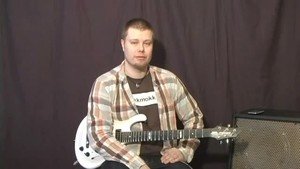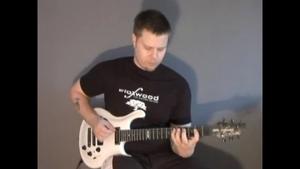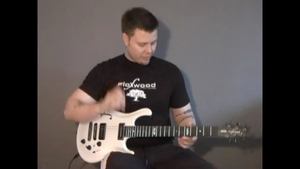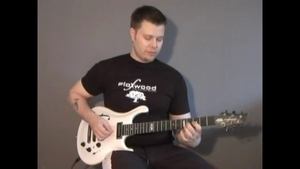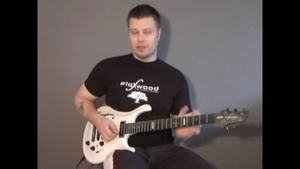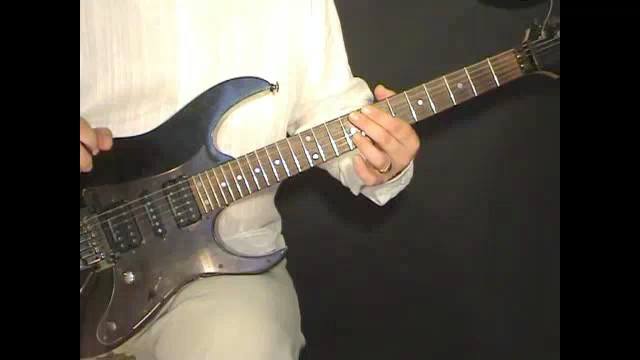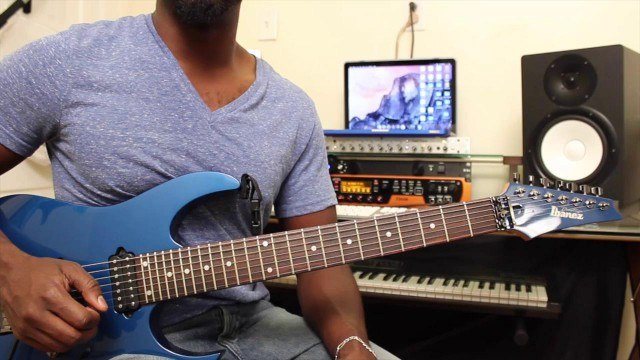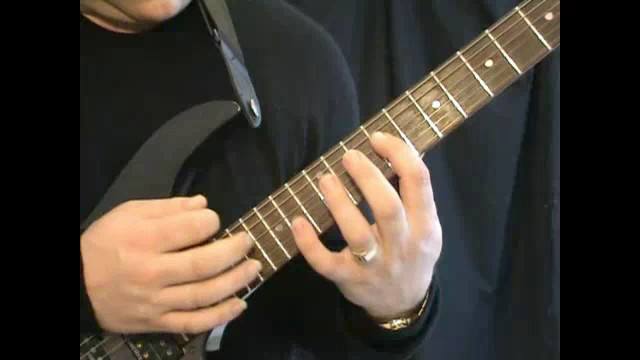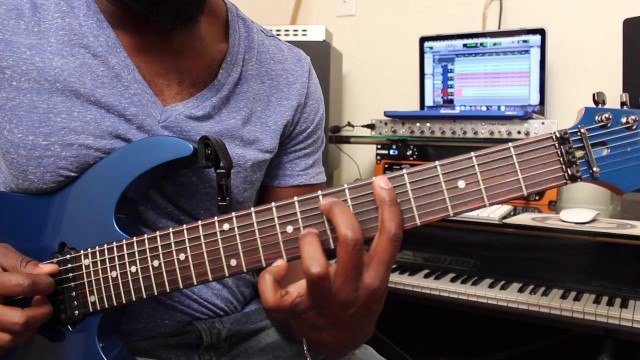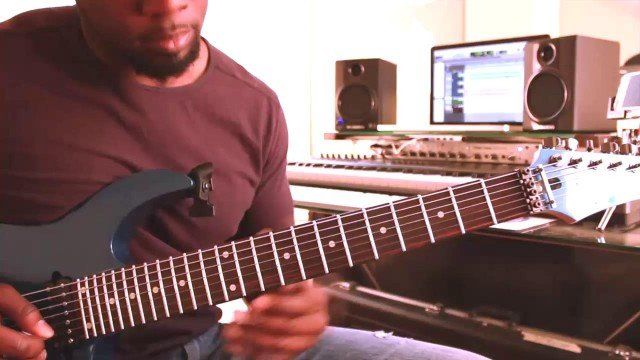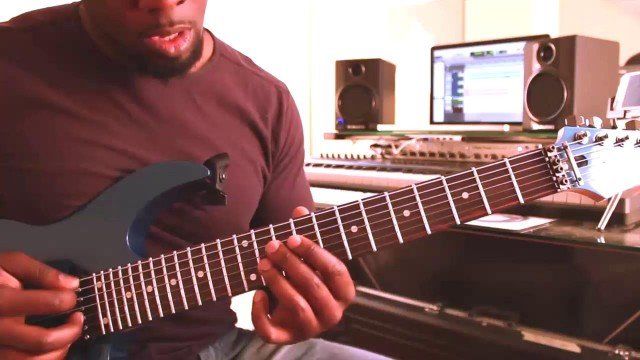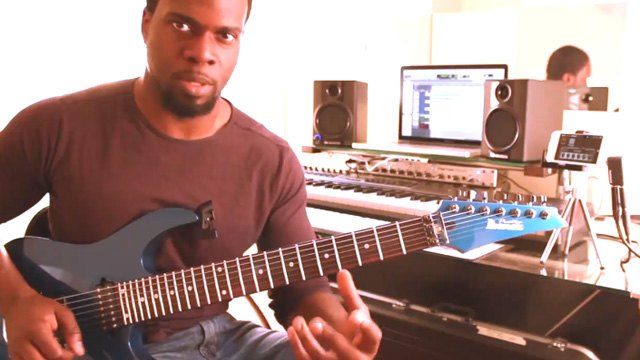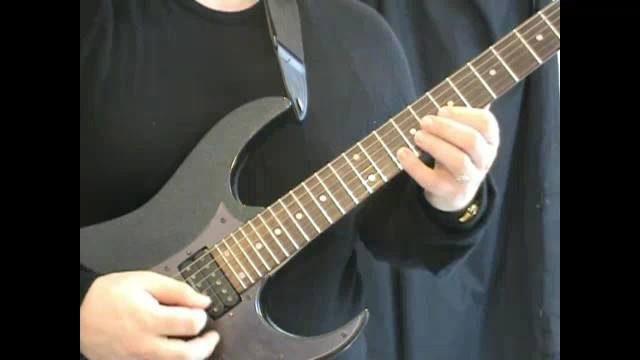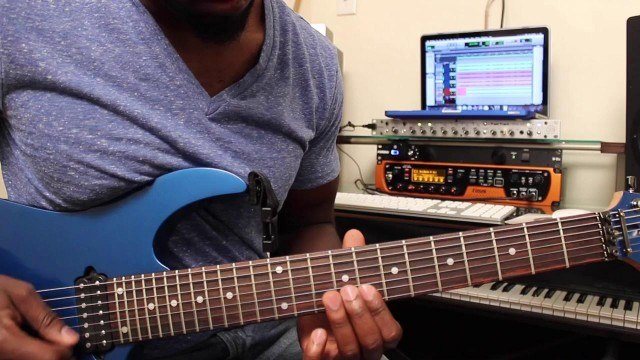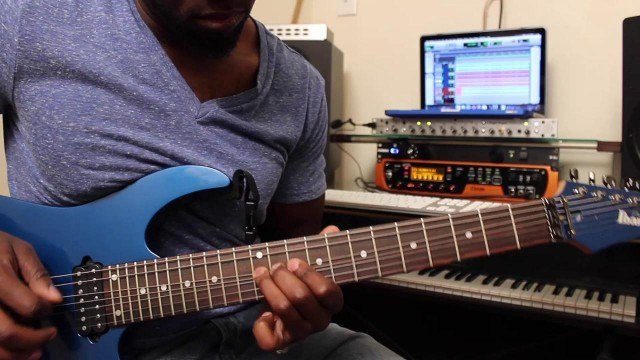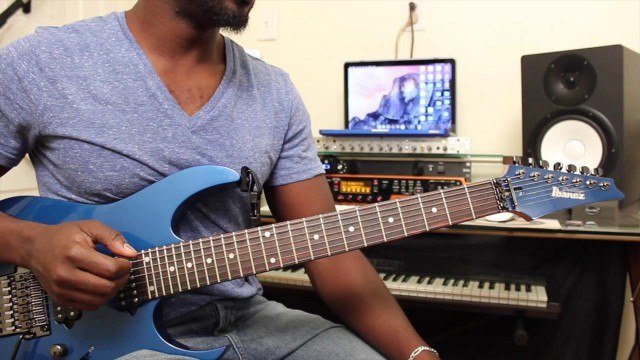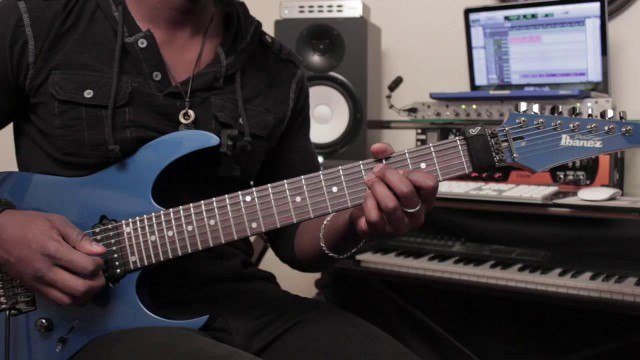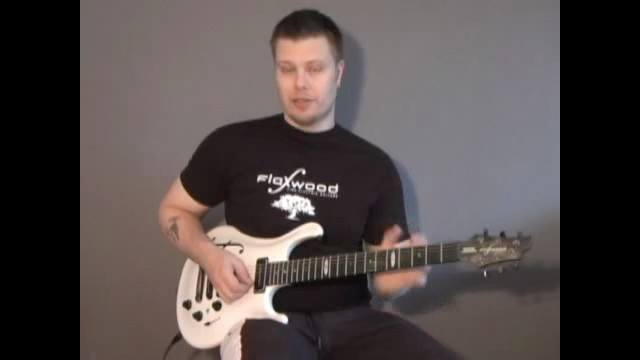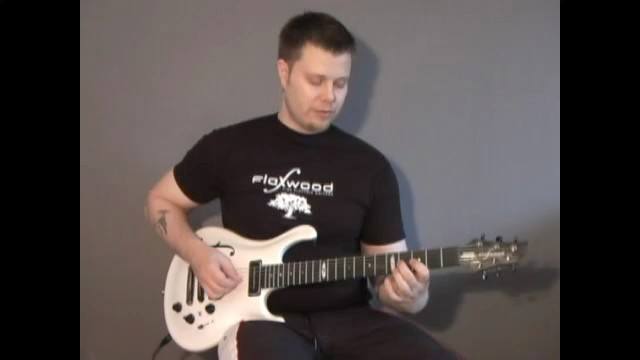In this first part, we will look into just the first 3 bars. Here I use artificial harmonics to produce my chosen notes. If you look closer at the very first note of this part, you will see that even though I'm fretting a B at the 4th fret on the G-string, I'm producing a D# harmonic with my right hand.
As I mention in the video, I will do a future tutorial where i discuss in detail how to use any harmonic technique to produce whatever note you need. For now let's just say that for every note you fret, there are several nodal points where you can produce a harmonic. The 1st, major 3rd, perfect 5th and dominant 7th are the most accessible degrees. In this case, I produce an artificial harmonic at the nodal point for the major third.
If this sounds like Greek to you, I suggest you just try producing artificial harmonics until you get to the note that matches what I play. I will lead you through the vast jungle that are harmonics in the future, I promise =)
If you feel unsure about the technique of producing artificial harmonics, and need to cover the basics of that first, I recommend you look into Rick Graham’s Pinch Harmonics lesson.
Done so far? Let’s move on to part 2 of the analysis then!

